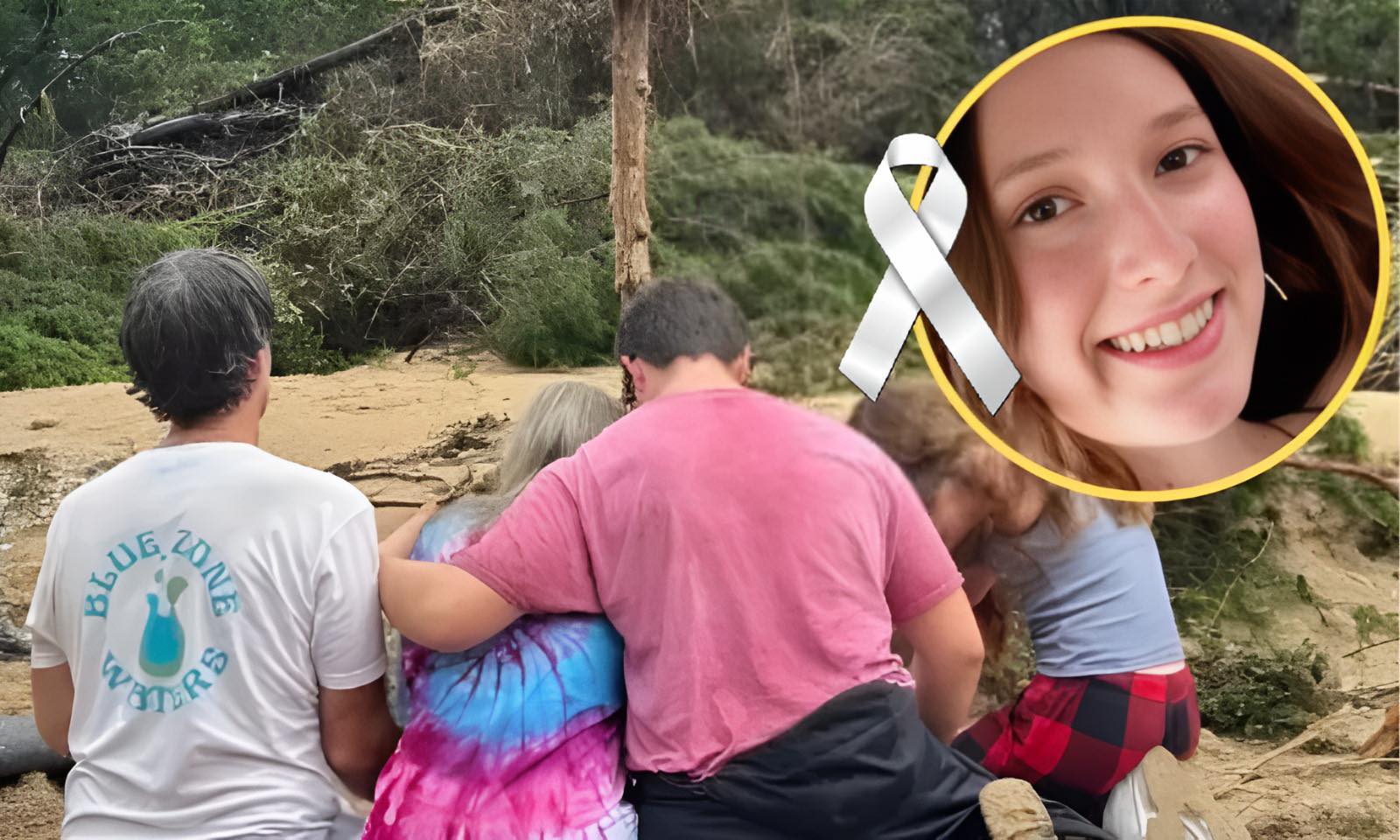In the rugged heart of Texas Hill Country, where limestone cliffs rise above winding creeks and dense woodlands, a peaceful summer afternoon was shattered by a sudden, violent flood. Seventeen-year-old Malaya Hammond was driving her family’s aging minivan when torrential rain burst from the sky, swelling Cow Creek beyond its limits. The narrow bridge near Marble Falls became a trap as a wall of muddy water surged toward them. The current struck the vehicle with terrifying force, killing the engine and forcing the van off its path, trapping Malaya’s parents and two younger siblings inside.
Without hesitating, Malaya unbuckled her seatbelt and stepped into the freezing, rushing water. Every stride was a battle against the rising current, but she moved with the fierce resolve of someone much older. Reaching the passenger side, she fought to pry the door open against the water’s crushing pressure, her hair soaked and clinging to her face, her arms shaking from the cold. One by one, she helped her parents out, then her eight-year-old sister and six-year-old brother, guiding them up the slippery embankment with steady, urgent words: “Keep going. You’re almost there.”
Behind them, the creek raged. Debris slammed against the van as Malaya cast one last glance back—proud, determined—before the current seized her. She reached out into the storm, perhaps hoping for someone to catch her, but the water was too strong. As she was pulled away, her family made it safely to land, clinging to one another and crying into the downpour.
Within hours, neighbors, volunteers, and first responders launched a desperate search. Boats, kayaks, and rescue teams scanned every whirlpool and bank of the flooded creek. For three agonizing days, they combed the water and the surrounding floodplain, chasing any clue—a footprint, a torn scrap of clothing, a drift of broken branches—clinging to hope. Flyers with Malaya’s bright eyes and long dark hair appeared on telephone poles from Marble Falls to Burnet. Each dawn brought renewed determination; each dusk left her loved ones wrapped in aching silence.
When Malaya’s body was finally found, nestled among driftwood and wildflowers far downstream, her family was overcome with heartbreak—and unshakable pride. State officials later confirmed that the flood was one of several that week, which endangered or claimed more than a hundred lives across rural Texas. Yet amid the widespread devastation, Malaya’s story stood out—a beacon of quiet heroism. In small towns and farmhouses along the creek, her sacrifice became legend. Candles flickered in chapel windows, and wildflowers—bluebonnets and Indian paintbrush—were laid at the foot of the damaged bridge.
The Cow Creek Bridge still bears the scars of that day: a twisted guardrail, a rusted piece of bumper clinging to a post. But for the Hammonds—and for all who heard of Malaya’s bravery—her real memorial lies in the love she showed in her final moments. She proved that courage doesn’t come with age, and that when love runs deep, it can drive us to face even the fiercest currents. Her name flows with the creek now, in every ripple and surge, reminding us that even amid the storm’s fury, one selfless act can shine brighter than any floodlight.
